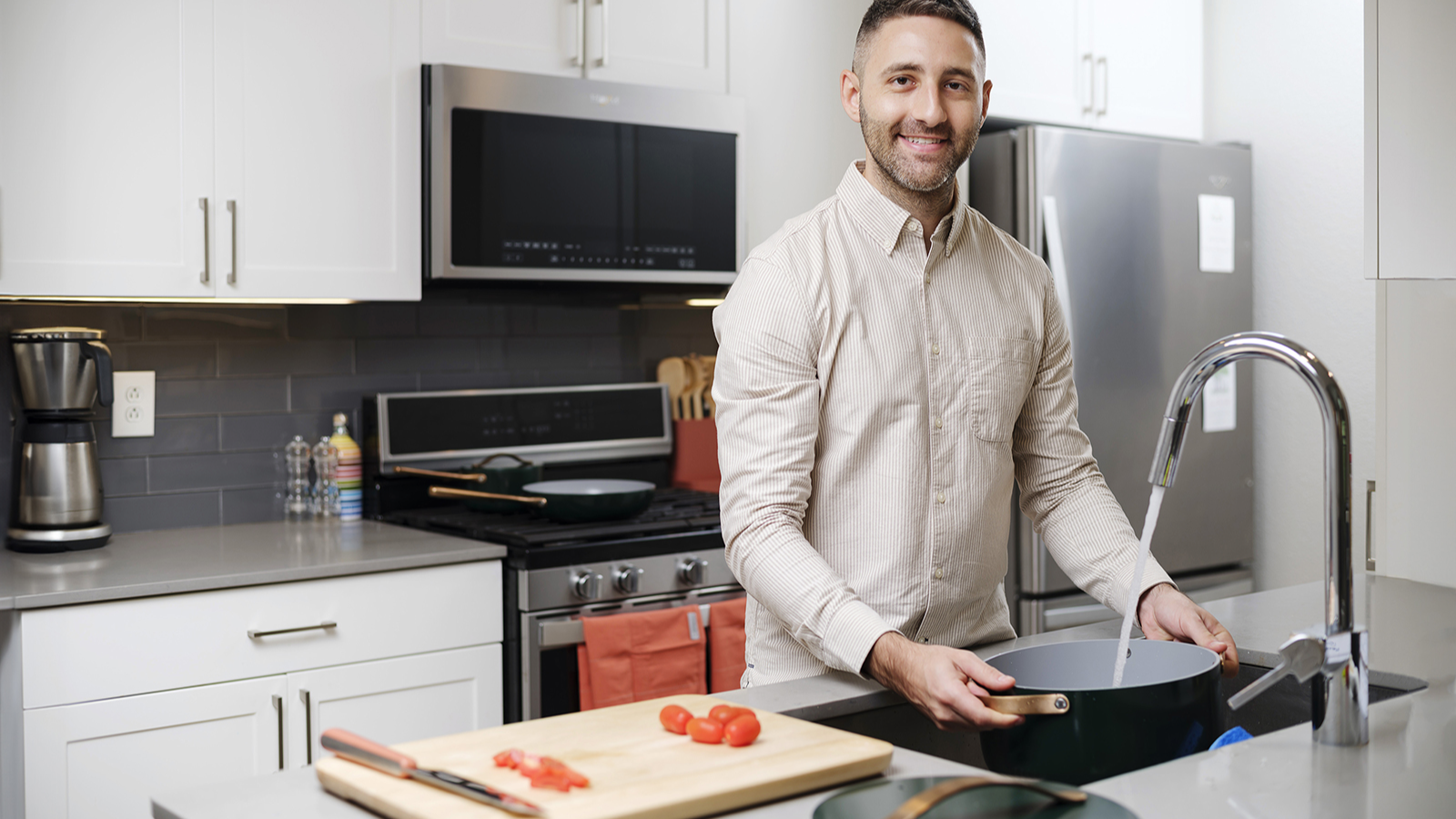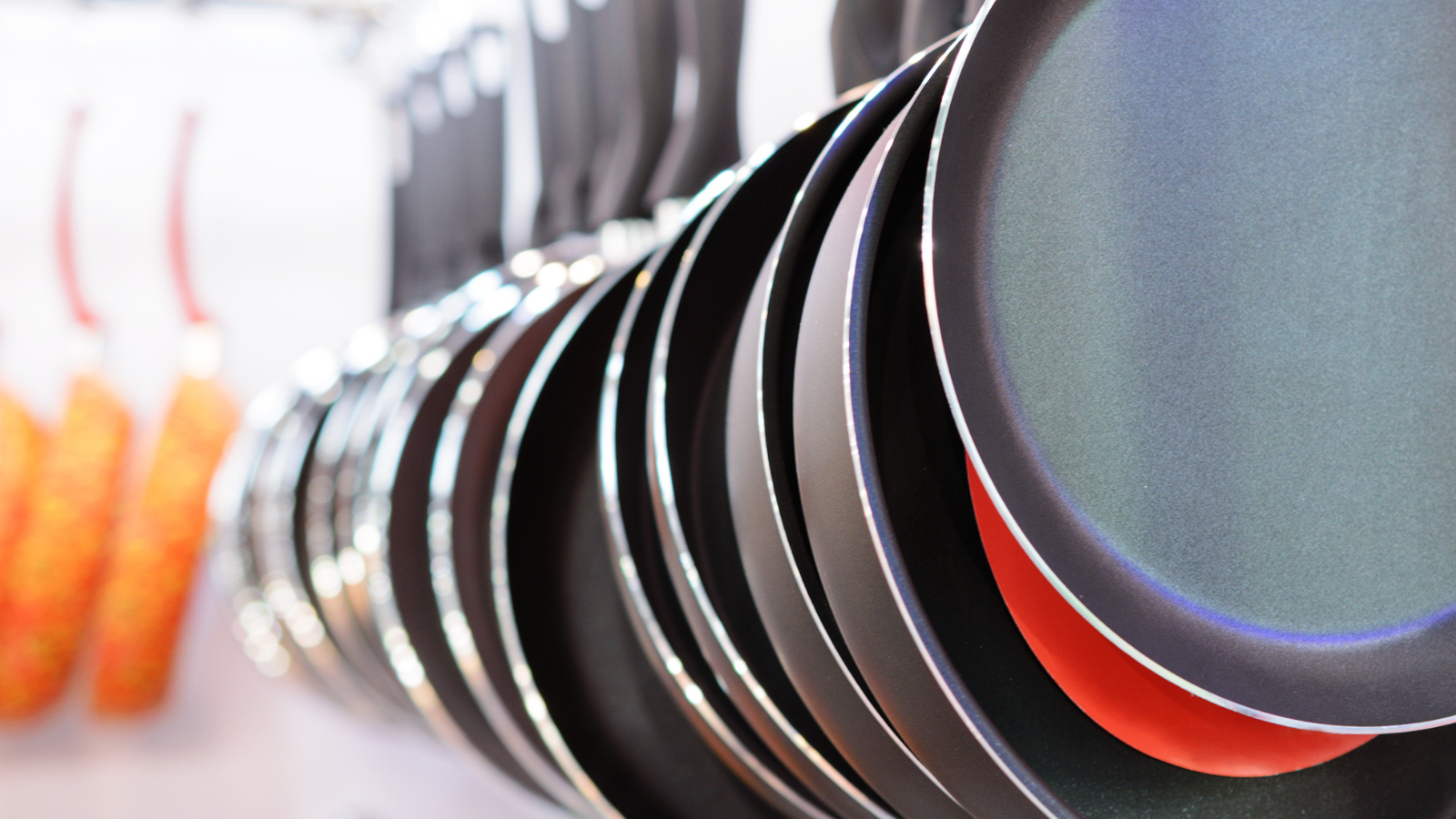One evening in 2017, Jordan Nathan’s New York apartment suddenly filled with harmful fumes from an overheated Teflon pan. A shocking call to Poison Control confirmed he had Teflon flu—a reaction to the toxic chemicals in traditional non-stick cookware. This frightening experience led him to take action, sparking what would soon be known as the Toxic Pan Kitchen Revolution—a $100+ million movement transforming kitchen safety and design.
From Crisis to Creation; Toxic Pan Kitchen Revolution
Nathan, a former finance professional and brand manager at Mohawk Group, spent the next 18 months thoroughly researching cookware materials and design. Through his deep investigation, he uncovered a troubling reality: 99% of cookware products were made with off-the-shelf designs coated in potentially harmful chemicals like PTFE and PFAS. As a result, in 2018, he founded Caraway with a clear mission: to create non-toxic, design-forward cookware that would make healthy cooking accessible to everyone. This vision sparked the Toxic Pan Revolution, leading to key innovations, including:
- Ceramic coating free of PTFE, PFAS, and heavy metals, tested by third-party labs (SGS, TUV) for safety.
- 5-ply stainless steel construction with an aluminum core for even heat distribution.
- Ethical manufacturing through BSCI and SMETA-certified factories.
Launch and Early Growth
Caraway launched in November 2019 with just 16 customers willing to take a chance on their innovative ceramic-coated cookware. The timing, however, proved serendipitous. As the pandemic hit in early 2020, home cooking surged, and Caraway’s colorful, safe cookware quickly captured the attention of homebound consumers.
Financial Journey and Growth
The company’s funding trajectory demonstrates remarkable growth:
- 2020: Secured $5.3M seed funding from 100+ investors.
- 2022: Raised $35M led by McCarthy Capital, valuing the company at $1.2B.
- 2023: Achieved total funding of $70.3M across three rounds.
By 2024, Caraway reached $100M+ in annual revenue, with over 1 million products sold and 150,000+ customers.
Marketing Innovation
Caraway’s success stemmed from a trifecta of strategies:
- Digital-First Approach
- Zero traditional advertising spend.
- Heavy focus on Instagram and TikTok, amassing 592K TikTok followers and 840K Instagram fans.
- Content emphasized design aesthetics and lifestyle storytelling, with posts scheduled during peak engagement hours (12 AM–9 AM).
- Ambassador Program Success
- Grew from 35 to 3,500 ambassadors, generating 13% of total revenue.
- The brand focused on building long-term relationships with micro-influencers by offering exclusive discounts and early access to new products. Additionally, these efforts helped strengthen brand loyalty.
- Paid $350K in affiliate commissions in 2022 alone.
- Retail Expansion
- The brand started with 100 retail locations in 2021, and over time, it expanded to 518 stores across the U.S. and Canada by 2023. As a result, the growth was both rapid and impressive.
- The brand partnered with Target, Crate & Barrel, and The Container Store. As a result, it became the first brand to have its full product line available in all Container Store locations.
Product Evolution
The brand strategically expanded its product line to meet diverse kitchen needs:
- 2019: Launched with a 4-piece ceramic cookware set.
- 2021: Introduced bakeware sets and food storage solutions.
- 2022: Debuted tea kettles and the “Minis” collection (8″ fry pan, 1.7 qt sauce pan).
- 2024: Released stainless steel cookware for high-heat searing and a limited-edition Petite Cooker for its 5th anniversary.
Each product emphasized sustainable packaging (using recycled materials and zero plastic), while also incorporating ergonomic design, such as magnetic pan racks for space-saving storage.
Challenges and Solutions
Caraway faced significant hurdles:
- Supply chain disruptions during the pandemic delayed orders by months.
- Skepticism from traditional retailers about DTC brands.
- Rising customer acquisition costs due to iOS privacy changes.
They overcame these through:
- Transparent communication: Caraway adopted a backorder system, providing real-time updates through the inventory tool Cogsy.
- Omnichannel fulfillment: Partnered with ITS Logistics to handle a 280% surge in orders, ensuring 2-day shipping to 96% of the U.S.
- Data-driven marketing: Shifted to AI-powered ads using influencer-generated content, achieving a 4.5 ROAS during holiday campaigns.
Key Success Factors; Toxic Pan Kitchen Revolution
- Product Innovation
- Safety first: Caraway’s ceramic-coated cookware meets EU and FDA standards, releasing 60% less CO₂ during production compared to traditional non-stick pans.
- Design-centric: Featured in Vogue and Architectural Digest, Caraway offers sleek, Instagram-worthy colors like “Sage” and “Perracotta.”
- Community Building
- User-generated content: With over 75,000 five-star reviews, customers highlight the cookware’s ease of use and non-toxic benefits.
- Educational campaigns: Through blog posts and emails, Caraway educates consumers on the dangers of Teflon, aligning with wellness trends.
- Strategic Growth
- Profitability focus: Maintained a 28% employee growth rate and $249,700 revenue per employee.
- Global expansion: Entered markets in Canada, UK, Australia, and UAE.
Lessons for Entrepreneurs
- Solve Real Problems: Caraway filled a gap in non-toxic, design-forward cookware—a market projected to be worth $97.8B by 2032.
- Build Community First: They invested in micro-influencers early, fostering loyalty as their followings grew.
- Embrace Agility: Caraway pivoted to retail during supply chain crises, securing partnerships that drove 35% of total sales.
Today, Caraway stands as a testament to how a personal crisis can transform into a movement for better living. With over $2.5M in philanthropic contributions to mental health and environmental causes, the brand proves that innovation, authenticity, and purpose can revolutionize an industry—one toxin-free pan at a time.
This blog post offers additional insights into the evolution of non-stick cookware and its potential health impacts.




Pingback:ARMRA: Rewriting the Rules of Wellness with Ancient Science - The DigiPalms
Pingback:From Woof to Wealth: The Bark Revolution in Pet Care - The DigiPalms
Pingback:The RYZE Mushroom Coffee Story: From Burnout to Breakthrough - The DigiPalms
Pingback:The RYZE Mushroom Coffee Story: From Burnout to Breakthrough - The DigiPalms